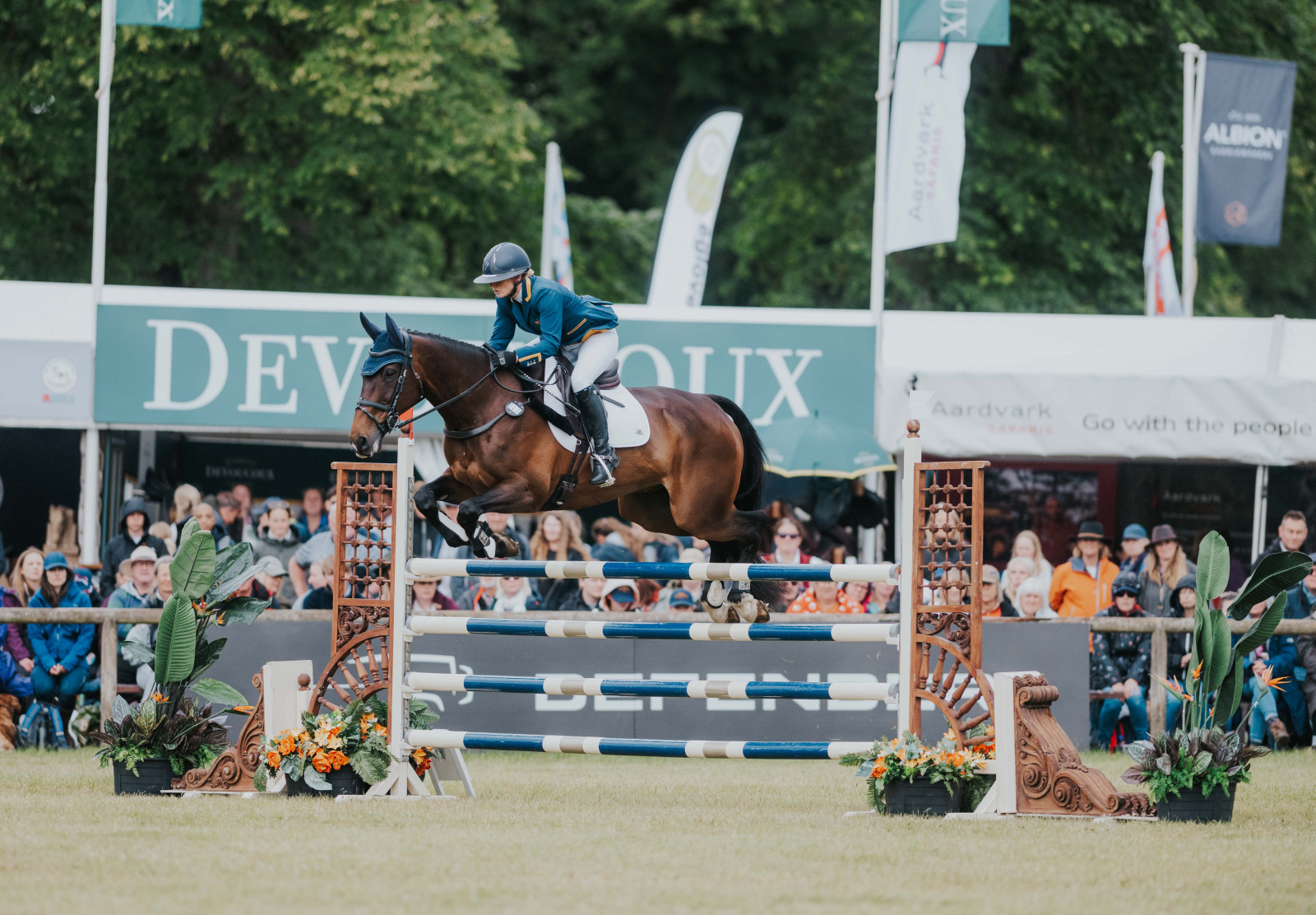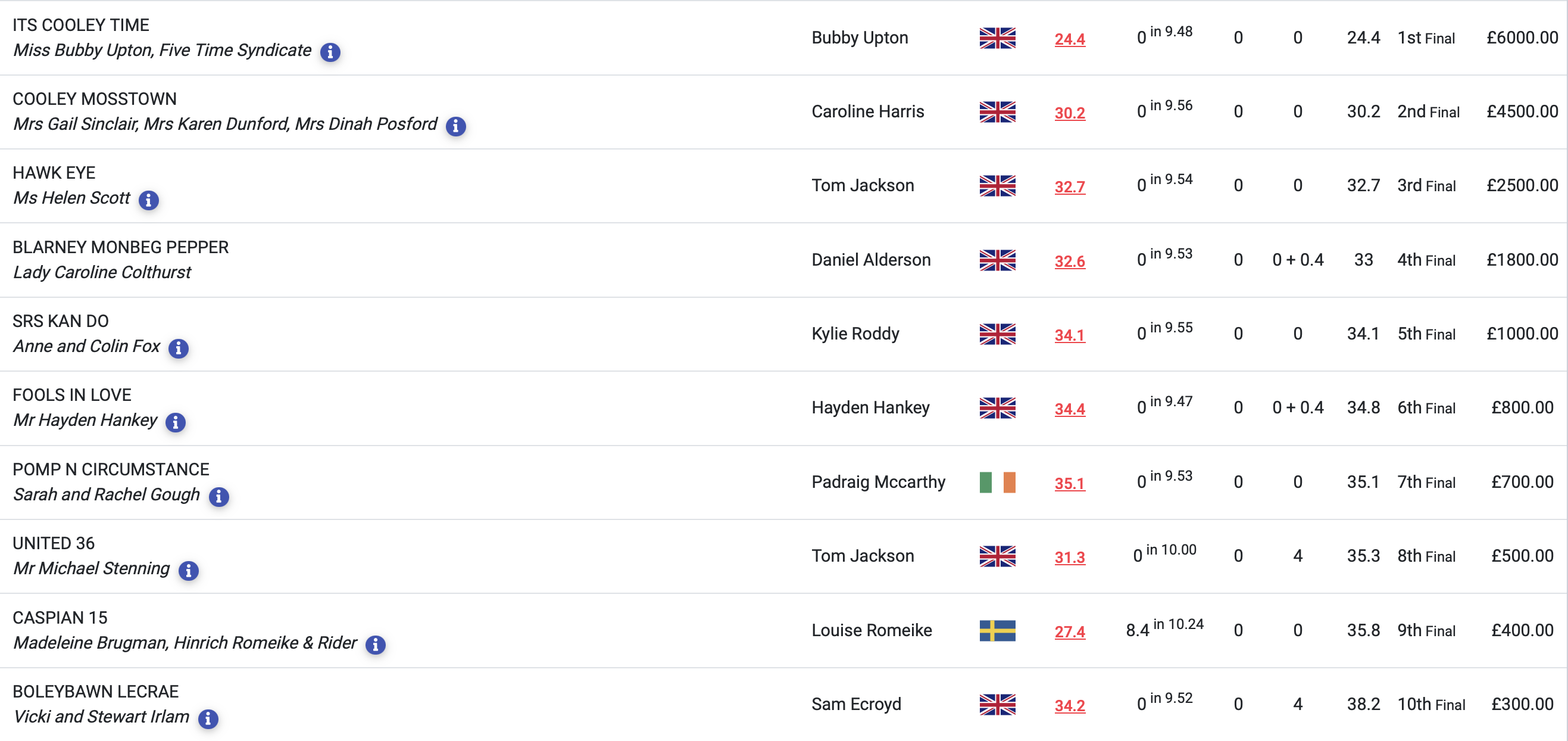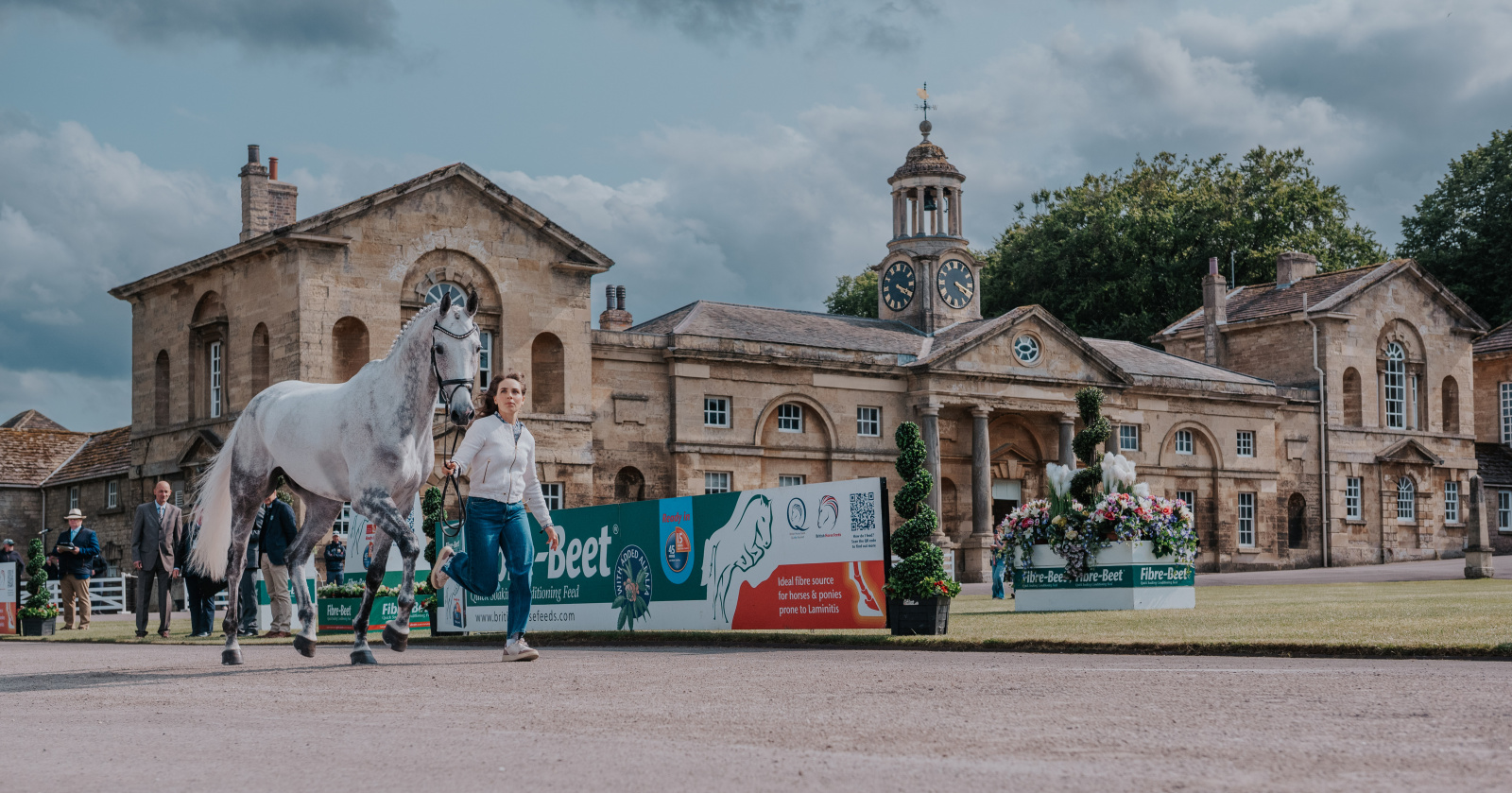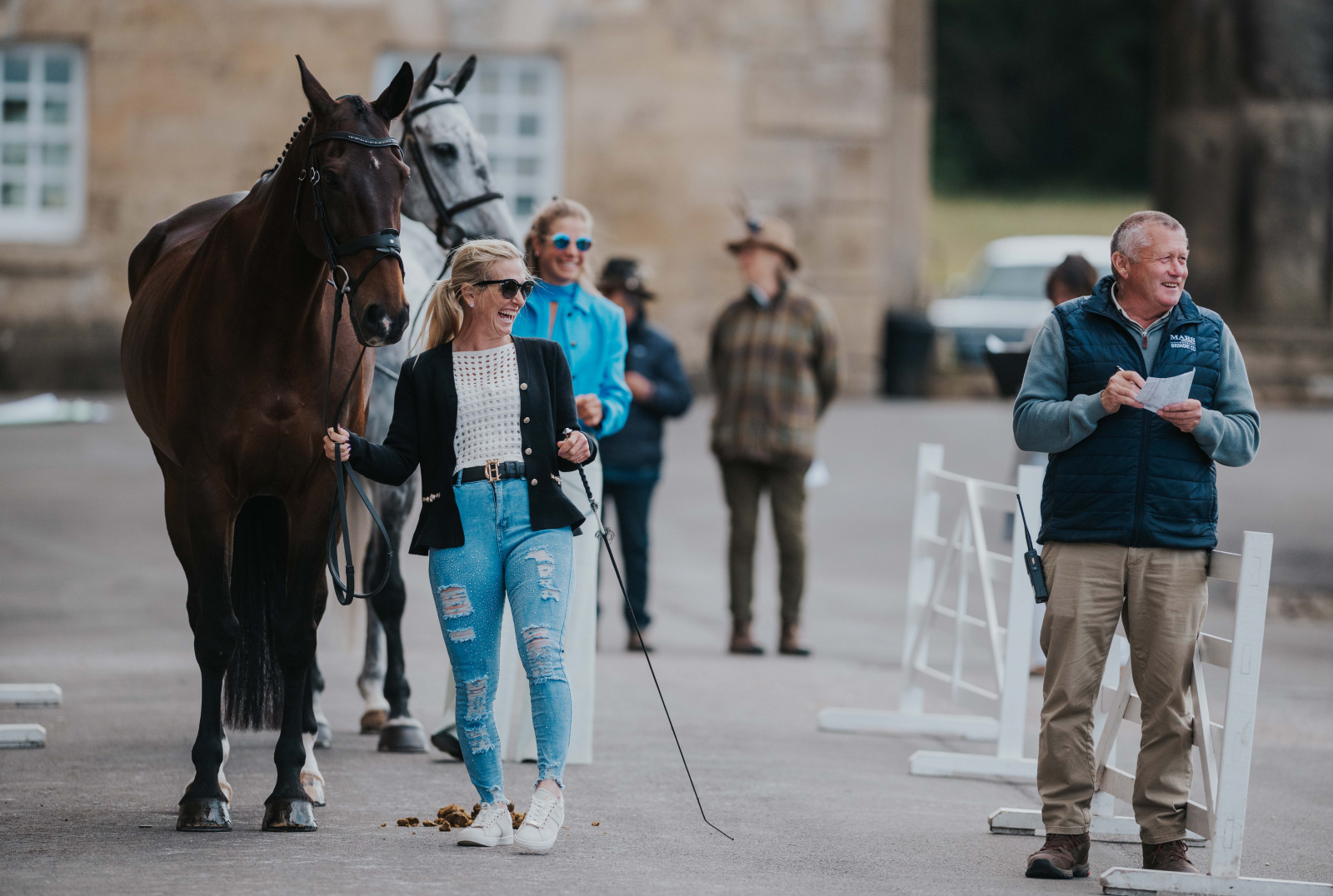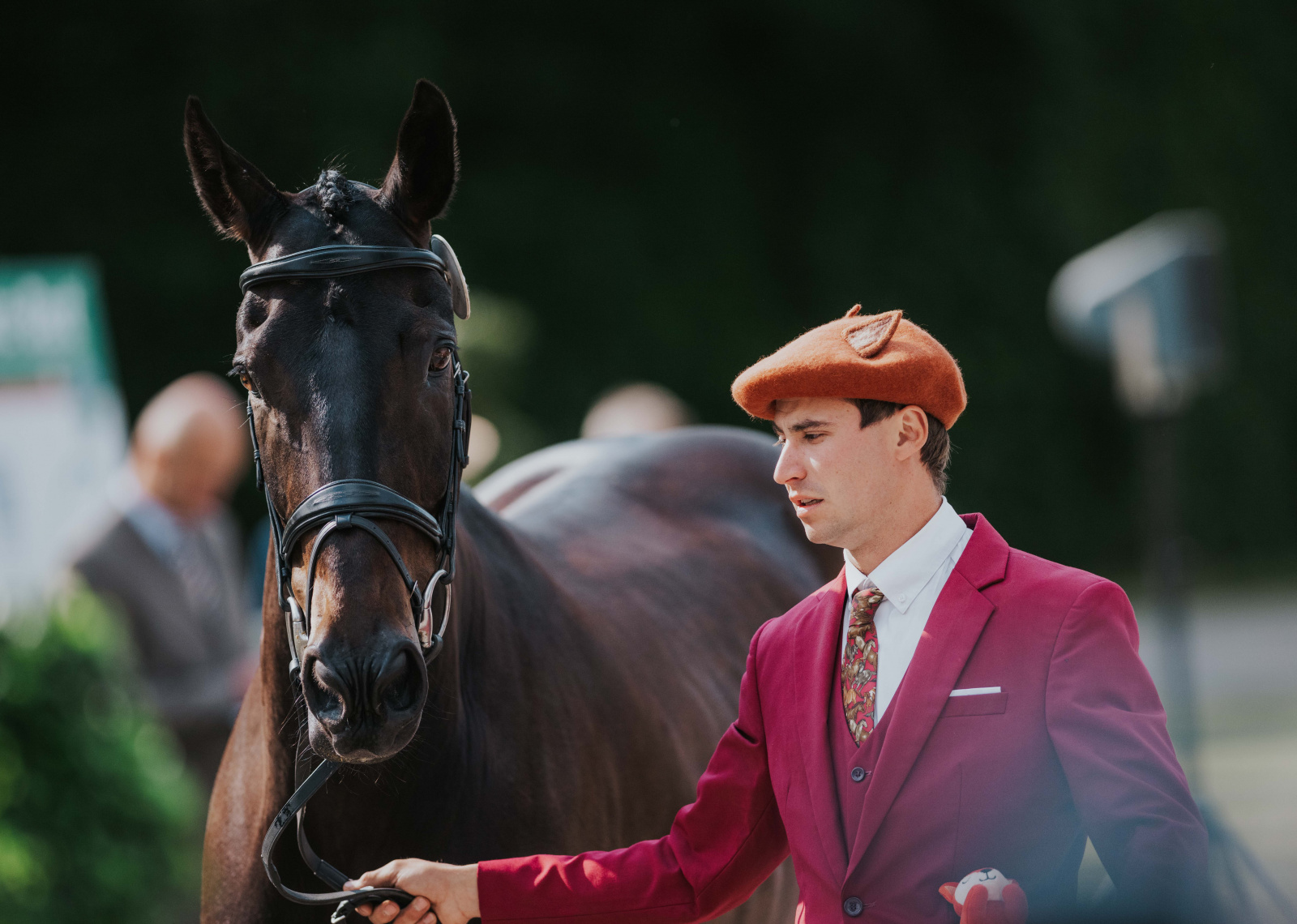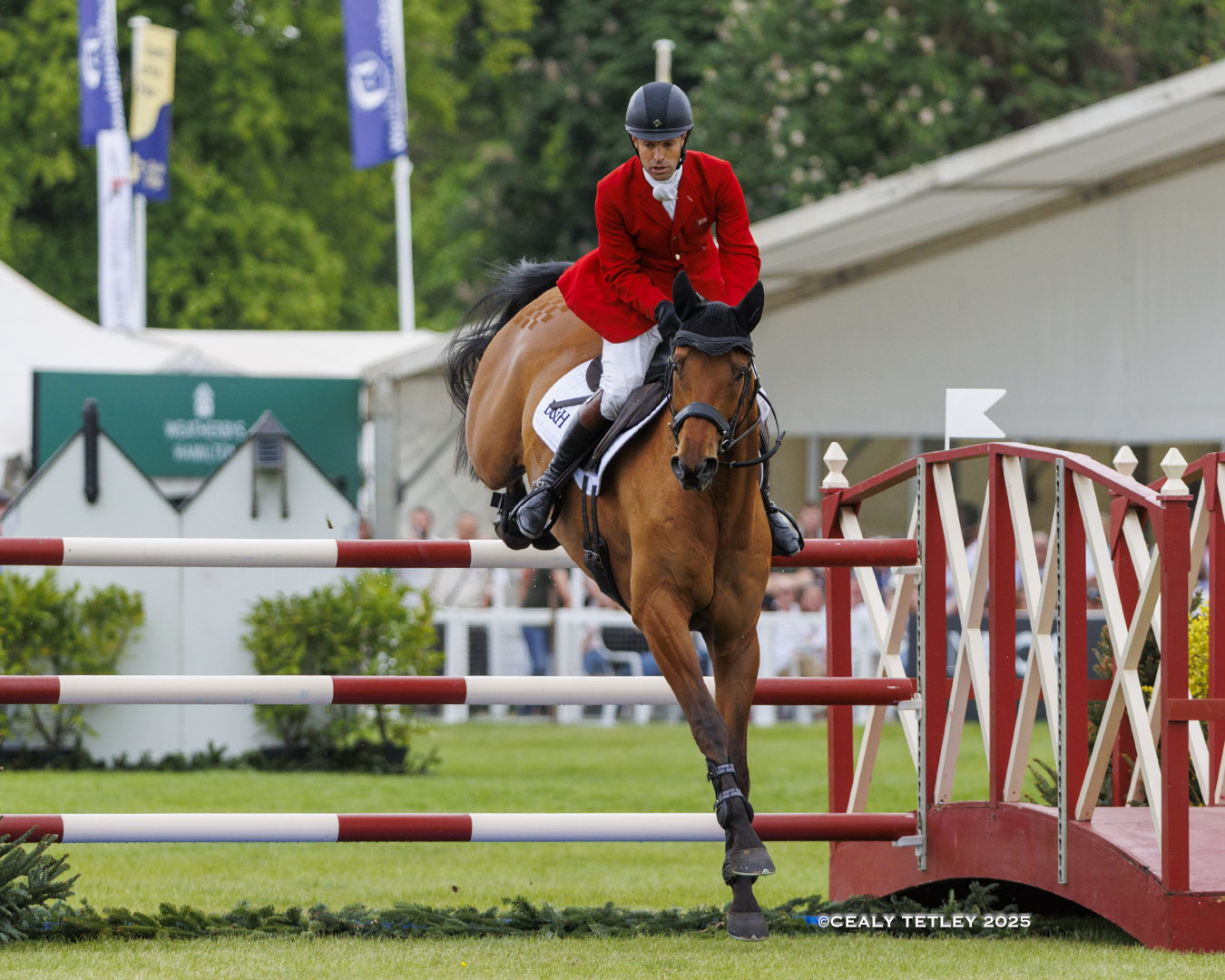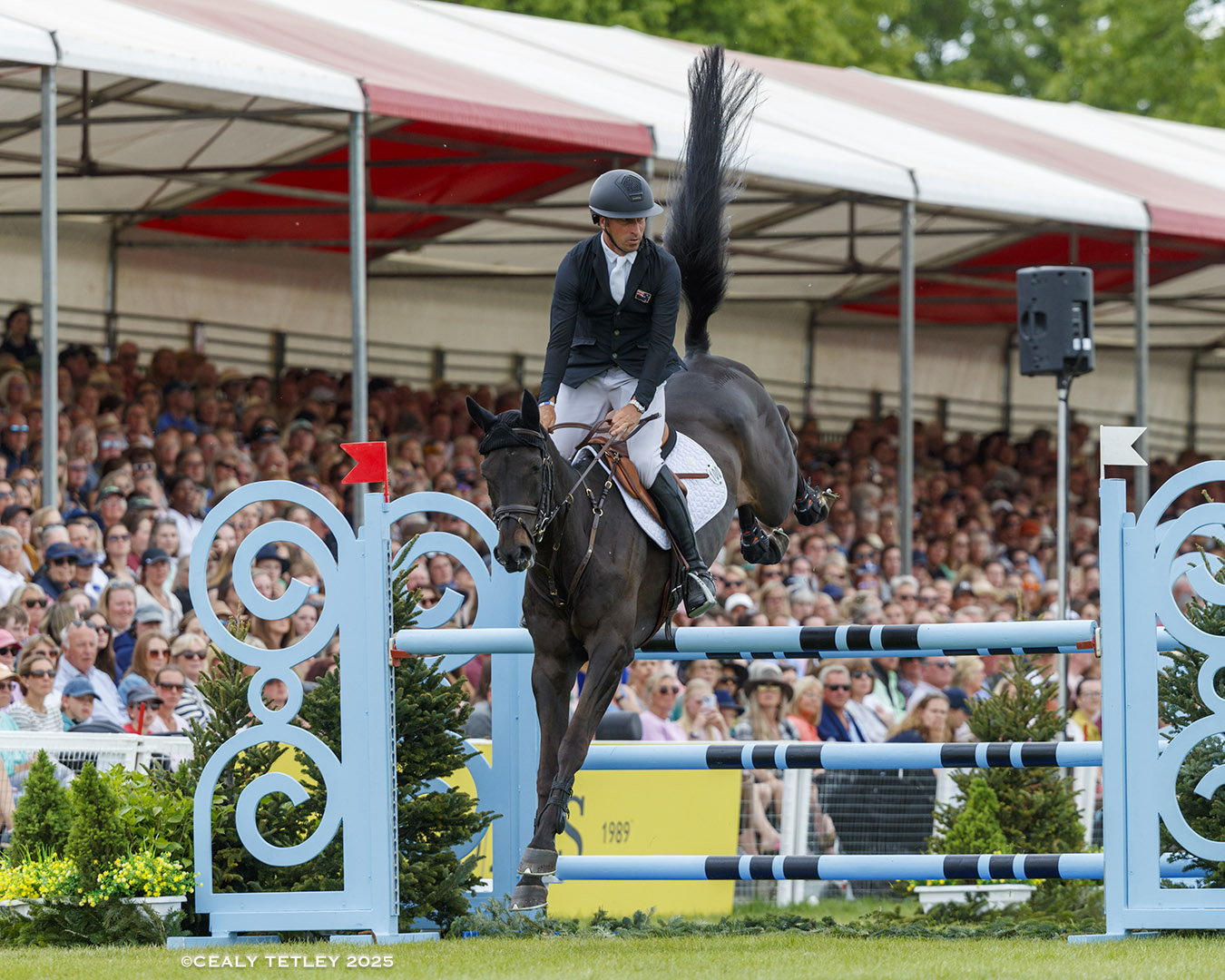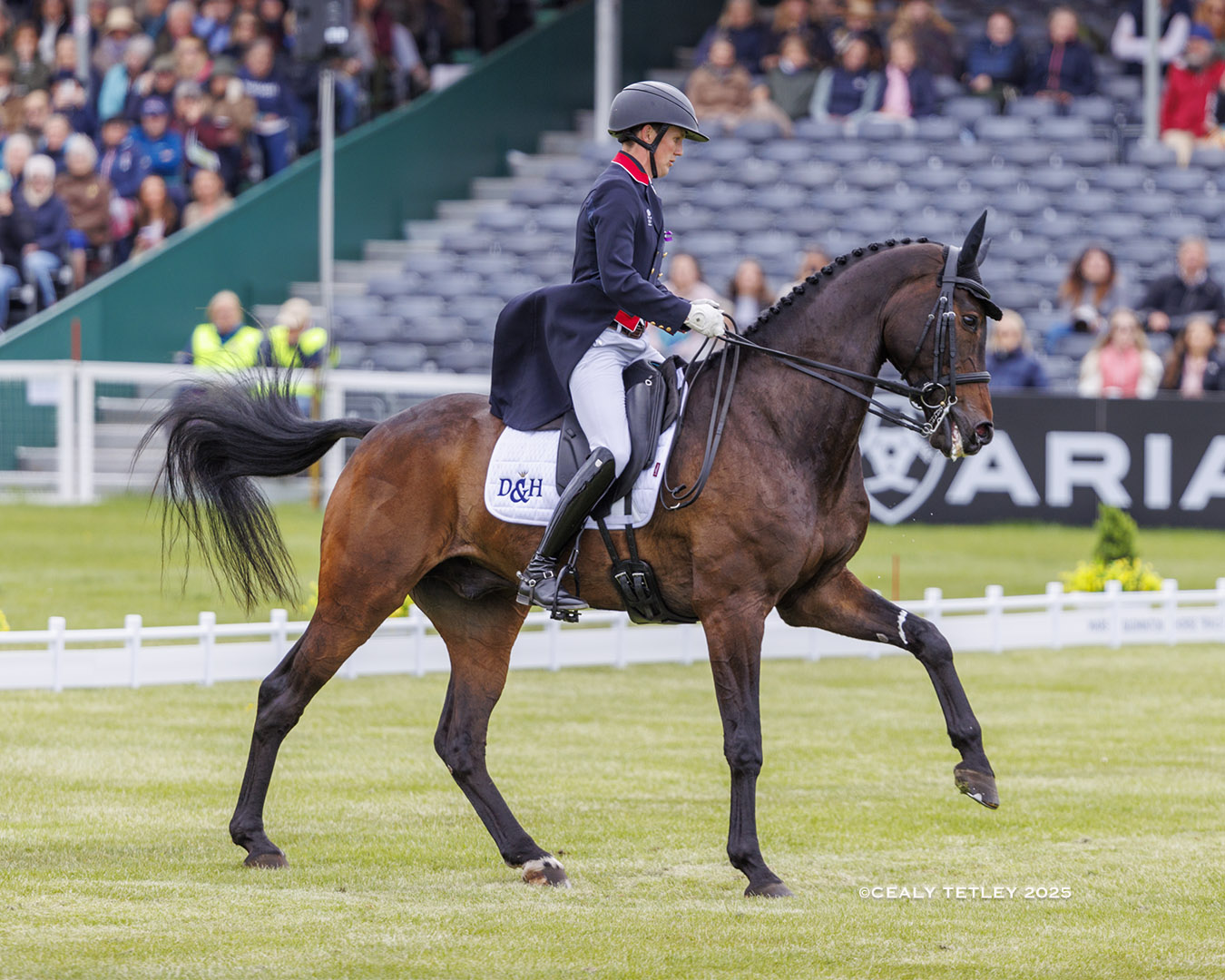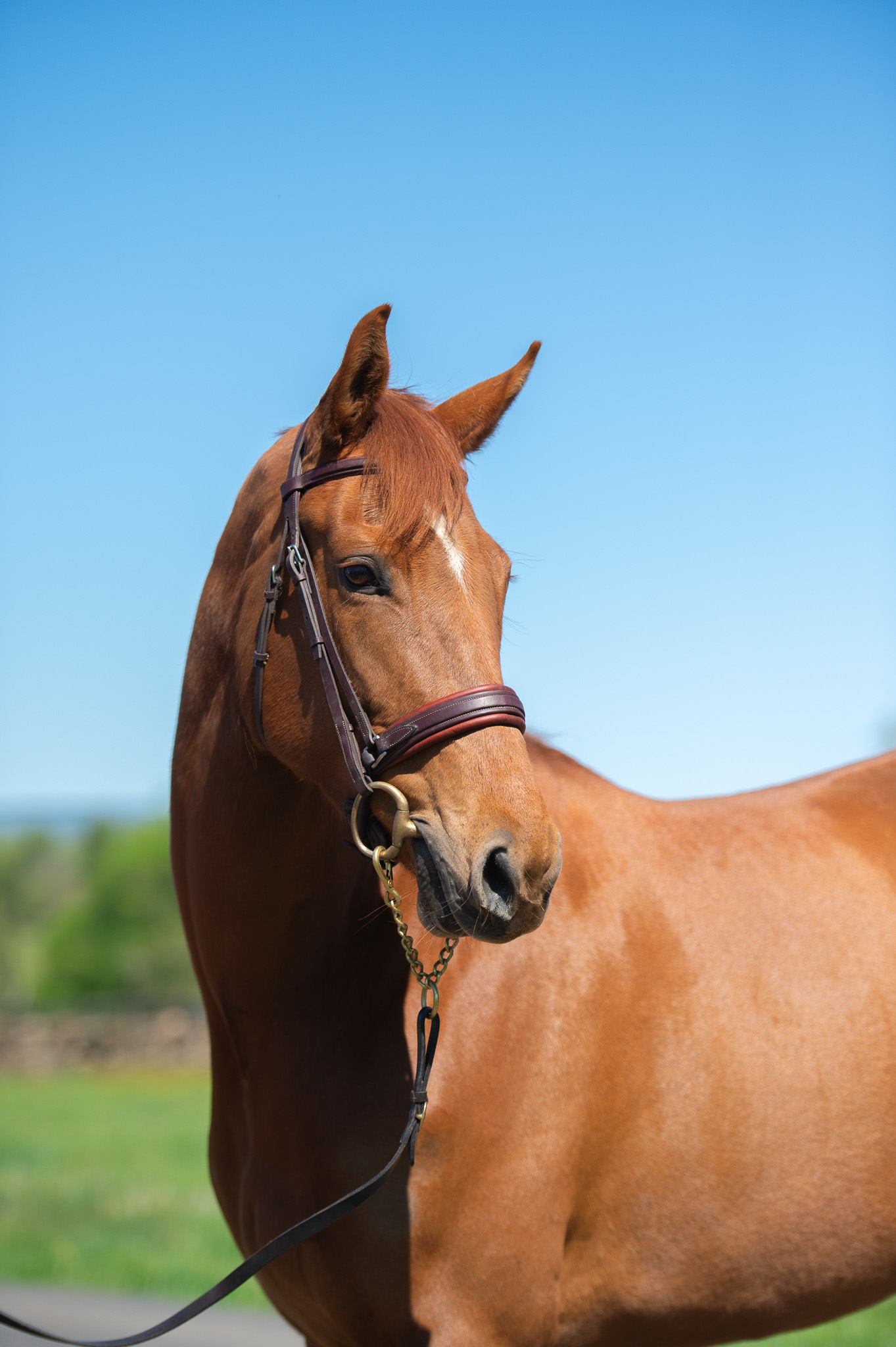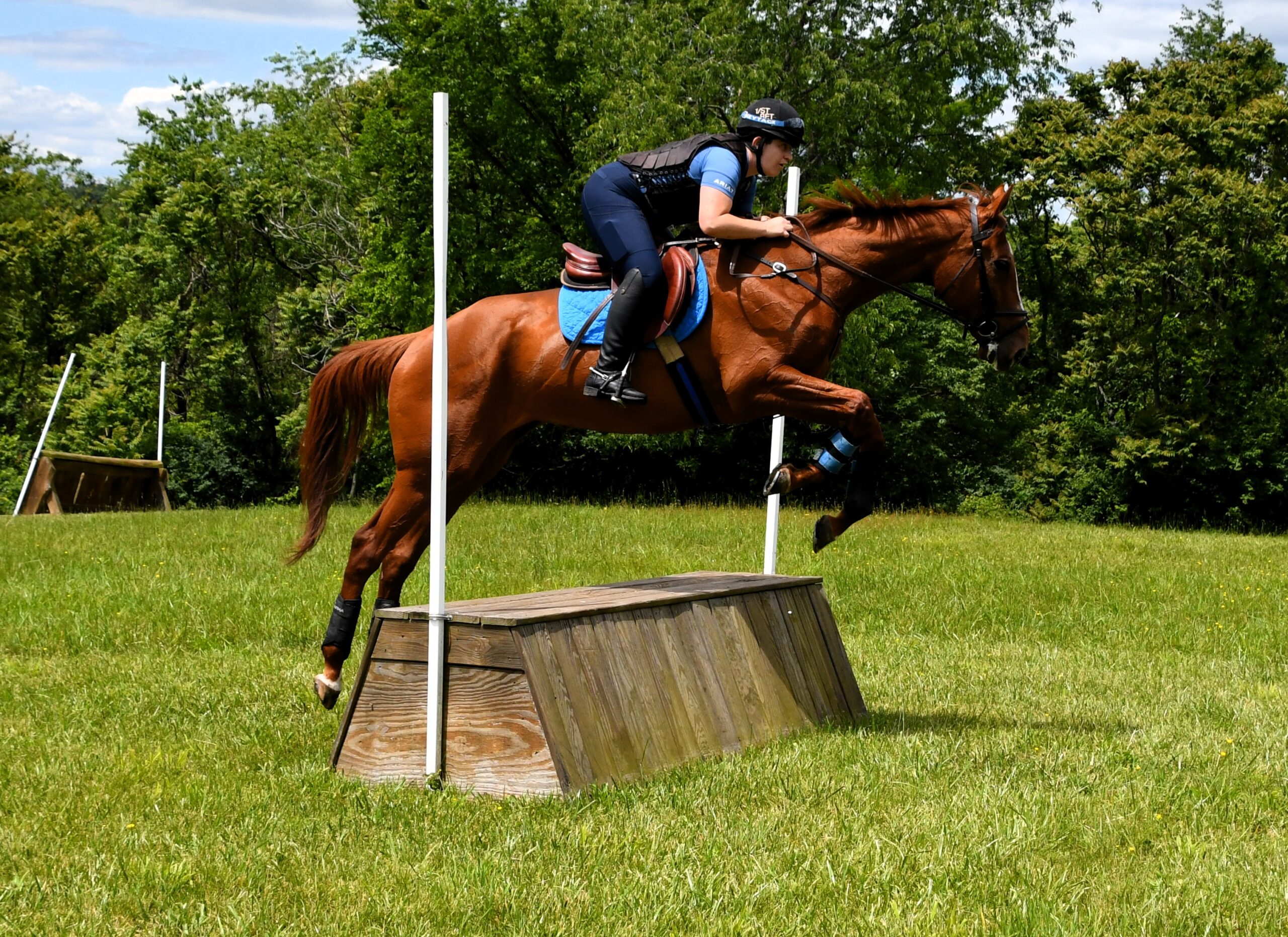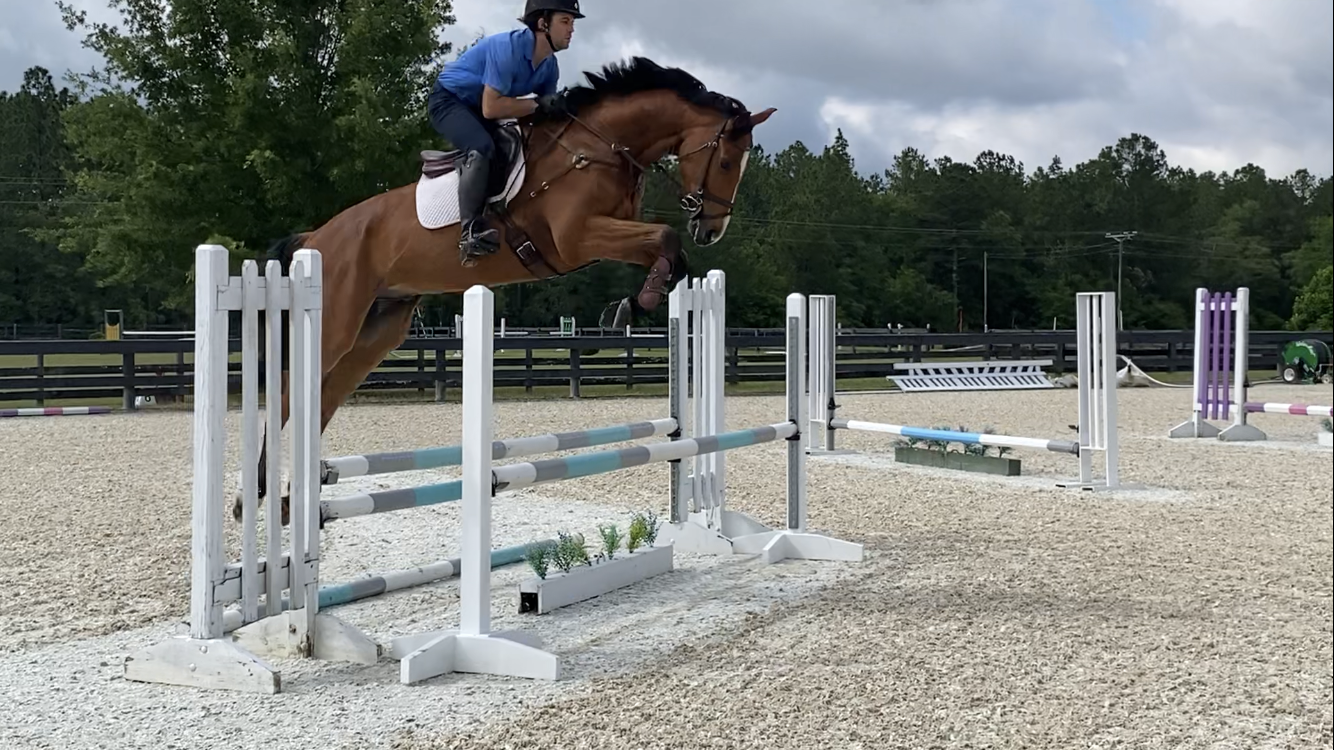
“That’s always my thing, here,” muses course designer Eric Winter as we cruise around the Badminton Estate, gilded and glorious in the spring sunshine. “It was my thing when I worked at Blenheim, too: that I cannot believe I’ve found a job where I get paid to go drive around and work in these places.”
This will be Eric’s ninth year at the helm of the MARS Badminton Horse Trials, and – thanks to two years of cancellations in the hinterlands of the pandemic – his seventh course to be unveiled at the Gloucestershire mainstay. Badminton is, of course, striking even in the worst of conditions, but this year, after two seasons of relentless rain, it looks and feels better than it ever has.
As we set out in Eric’s car – “we can actually drive around the course now without worrying about it,” he grins – the man behind the most anticipated course of the season isn’t blind to the magic of the place.
“The weather means that all the trees are in bloom at the same time, which I don’t think I’ve ever seen before,” he tells me, gesturing to the abundance of growth on the treeline. It’s a jewellery box of gold and emeralds, and in merry little clusters around some of the sport’s most formidable fences, carpets of bluebells have sprung up. We pause mid-combination to watch a bird of prey circling lazily in an unfalteringly blue sky. I think, not for the first time, that being an eventing journalist isn’t actually all the dissimilar to being an overemotional weather girl on the evening news: whatever the forecast spells determines how I feel about the whole world. Right now, even with so much to worry about within the sport and beyond it, where so much feels like it’s falling to pieces, it’s startlingly easy, here, to just breathe it in and feel a little bit more hopeful.
But that’s me, walking the course a week out from the event, when the tradestands are in situ but empty, the grandstands are upright but occupied by nothing but Badminton’s centuries of ghosts, and the course is occupied only by us, press officer Becky Elvin, a handful of groundsmen and builders, and an army of Portaloos, not yet too frightening to contemplate using. In a few days’ time, when this same ground is being well-trodden by the 80-odd competitors who’ll have to tackle the course come Saturday, the mood might be a bit less Enya-in-paradise, and the Portaloos might be a touch worse for wear.
It won’t be the ground that worries them – despite much discourse among fans about how hard it could be after a very dry spring, Eric’s team has been watering for five weeks straight, and while it’s still what might be referred to as ‘fast’ ground, it’s also got a healthy grass cover on it, which adds some additional give to the going.
Instead, they might find themselves struck by the early intensity of the course itself, which, this year, sees them head to the Lake early on and throws them very nearly straight into full-up five-star complexity.
This direction, Eric explains, is a real stamina question: from the last loop in front of the House all the way home, it’s a long, steady pull uphill, and even in fast conditions like the ones we’ll see this week, that means that riders will need to constantly calculate and calibrate the fitness and energy levels they and their partner have to play with. It feels, at first glance, like the kind of course that won’t necessarily pull a winner from miles down the leaderboard, as we can see happen in very wet, relentlessly sloggy years — but equally, this is a particularly long track that doesn’t really let up all the way around. And with an optimum time of nearly twelve minutes? We’ll definitely still see some exceptional gallopers overcome a tricky first-phase performance.
The feel and length of this year’s track might feel perfectly suited to a dry, top-of-the-ground spring, but actually, Eric doesn’t design for the long-range forecast at all, he tells me. It can’t: his preparations begin too early, while the event is still actually underway.
“I’m a big believer in designing for dry weather and then tweaking the course back if necessary, rather than designing for the wet and then having a dry year and everyone gets the time,” he says. And so, to start with, he continues: “I’ll walk the course on the Sunday of the event, and I walk it in the opposite direction so I can get a bit of a feel of where I can go and what I can do. Then I’ll walk away from it completely.”
He returns to the canvas in August, after a long summer of coaching and squirrelling away inspiration.
“That’s when I start to get it nailed down in my head where the route’s going to go, and we get it roughly drawn up. In November, I do a walk with my technical delegate, and that’s what I like to call a ‘philosophy walk’ — we walk around each part and I tell them, ‘well, this could be two corners, or it might be three,’ and we discuss the difference between the two potential questions, and the impact.”
Depending on how wet the winter has been, Eric’s team of builders, helmed by James Willis, has the fences out in the estate from the end of February. March is for ‘tweaking angles and fiddling with lines’, and April and early May are for nailing down the visuals, touching up the paintwork, laying out the intricate wood carvings made by builder Peter Macgregor, and making sure that the brush is thick, healthy, and at the right height. The latter job is a last-minute one in sunny years like this: any early-laid brush will wither up by the time the event runs, and so even into this week, some fences will be getting makeovers.
The result? A beautiful course that fits the aesthetic framework of the parkland it fits in: no gimmicks, no overtly fancy fences, “and no yellow submarines!” grimaces Eric, recalling a fence on course at Malmo one year. Each iteration of Badminton aims to crown the best in the sport, but with an important caveat: can the team marry modern innovation and tradition, helping Britain’s first three-day event wear its 75-year history with pride, while also embracing the changes that the sport has undergone?
Join us for a walk around this year’s course — and for full visuals, and insights from Sir Mark Todd, head over to the CrossCountry App’s virtual walk here.
Fence 1 – Spillers Starter
As always, the startbox and the first fence are situated in the main arena, which means that each competitor will get to head out on course with a grandstand full of people cheering them on. This first effort is the same as it always is: compact, straightforward, and festively floral. A speedbump to get the confidence up.
Fence 2 – Bloomfields Horseboxes Keeper’s Table
Once out of the arena, there’s a downhill run to the first ditch line on course, the first enormous effort, and the first of the day’s deformable fences – a 1.60m wide, 1.20m tall table spanning the ditch below.
There are twelve frangible fences in total on this year’s course – the most, Eric tells me, of any five-star.
Fence 3 – Totworth Court Brush
The next ‘warm-up’ fence at 3 is straightforward and friendly in and of itself, but when Eric boots me out of his BMW to get my feet into the grass on the approach, I quickly find the real heart of the matter: here, he’s got a patch of ground that’s almost erratic in its terrain changes. One step up, one step down, a camber here, another there, heading the other way – so this simple brush fence won’t be a run-and-jump effort, but rather, the first chance for riders to make adjustments and think about footwork.
“That, to me, shifts them off their pace early in the course, and lets them know they’re at Badminton,” says Eric. “If I was [building this question] for a four-star, I’d want to give them more time to get into a rhythm before shifting them. But with this, I want to move them off their balance a little bit at the start, so the riders have to think, put their leg on, and be a bit more dynamic.”
It’s also the first time riders will have a choice to make: they can opt for the left- or right-handed brush here.

The Savills Staircase.
Fence 4ABC – Savills Staircase
The duo of steps, and its hefty third element, returns after sitting out the 2024 event, and this year, the final fence is a wide, colourful haywain. Those two steps will require a fresh horse to sit back and listen, rather than leaping into space, but that makes this question quite a helpful set-up for much of what’s to come, and an archway of strawbales before the drops will funnel them to the question and channel their focus away from the crowds that always gather here.
This combination is the only question between the first and second minute markers, and so this is a good opportunity for competitors to get up on the clock early on.

The Countryside Alliance Parallel.
Fence 5 – Countryside Alliance Parallel
Just meters past the second minute marker is an airy silver birch oxer, set under two trees. A couple of strides past the fence, and set off to the left, is another tree – and this one acts as a very useful early barometer.
“This will be the first time that you start to see whether they’re in contention or not, because the quick ones will go straight through and stay on the inside of the tree, while the others will come around the turn and get a bit straighter to it, and go behind the tree.”
The light, too, will play a part here: on a very sunny day, as it is while we walk the course, there’s a dramatic shift into the shadows under the trees, while an overcast day will make the visibility better on the approach.
Fence 6 and 7 – Agria Corners
Whether minute two to three is a quick or steadier one will depend, largely, on the decision that each rider makes at this separately-numbered double of corners, which were inspired by those at Maryland’s CCI5* and feature very similar open owlholes on top. They can be tackled as a double or, because they’re separately numbered, can be completely separate: after jumping the first, riders can opt to circle around the back of the second and turn back to it without picking up penalties.
While the addition of the brush won’t have any sort of significant impact on how competitors tackle these corners, it does serve another important purpose: it makes the fences look more imposing and impressive for spectators. That, says Eric, is a balance that’s crucial to strike – how can he build something that’s horse-friendly while also putting a stop to the complaints of the folks who believe eventing ‘isn’t what it used to be’?
“We’ve had these corners in the park before, and when they’re in the middle of the water, they have a presence to them, but when they’re just standing on their own, they get lost a little bit – they can feel like a portable fence in the parkland,” he says. “I wanted to give them some more weight and some more presence, and after I went to Maryland last year, I got the idea. There’s an element of [course design] that’s equestrian, and there’s an element of this level that should be about entertaining the public, and that’s something I think about a lot. I want the guy who comes here with his wife, the guy who knows nothing about horses, to be able to walk around and think, ‘even I can appreciate that this is something great.’”

Gemma Stevens and Jalapeno jump the Waterfall at Badminton in 2023. Photo by Nico Morgan Media.
Fence 8 – World Horse Welfare Waterfall
After the corners, competitors will hook a right to gallop alongside the length of the Lake – and in doing so, they’ll pop over the now-familiar profile of this waterfall table, which has been a mainstay of the Badminton course since 2019. The Lake is easily the busiest area on course, and this fence will give horses a chance to get an eyeful of the crowds before they have to face them properly at the next combination.
Fence 9 and 10ABC – MARS Lake
The key question here, this year, is focus: it’ll feel like those endless crowds are nearly next to the fences, and with bars and pavilions just behind them, the ambient noise levels will be at their peak at this combination.
The straight route features two rolltops, the second of which drops down into the water. Then, there’s a deep, 1.40m skinny in the water, and then another on dry land after a short, steep ascent out of the lake.
For horses who’ll need some more time to adjust to the intensity of their surroundings, there’s a long route that’ll add the better part of ten seconds to the clock but which takes them along the fenceline and turns them away from the crowds to jump.
“The first year I was Assistant Technical Delegate here, [former course designer and director] Hugh Thomas said to me, ‘I’ve been designing this water for twenty years, and I’m clean out of ideas!’ There was me and someone else working, and he said, ‘you youngsters crack on – anything you want to do, as long as it doesn’t involve dragons or butterflies or turtles in the water, you can do,” laughs Eric. “This year, I think I’ve gone a bit retro with it – this is quite like something Hugh did years ago. Or at least the rolltops are – then it becomes very modern when they move on to the skinnies and have to find a line and work their way through it.”
The Savills Staircase and Agria Corners, he explains, “are perhaps fractionally softer, because I wanted them to be a chance for the horses to meet the crowds for the first time before they come to the Lake.”
This, of course, is a proper five-star question – but once they’re past it, they’ve got a long gallop ahead of them, and three-and-a-half intense early minutes behind them.
They will, Eric says, “feel that they’re really in business as they gallop away.”
Fence 11AB – Guide Dogs Cord Pile
Though this is numbered as though it’s two fences, it doesn’t have to be: riders can choose to jump one eye-wateringly huge cordwood pile, which is among the biggest fences on course, or two slightly smaller ones. They’ll hit the fourth minute marker shortly after landing – maybe. More likely, they’ll realise they need to use the long gallop to twelve to catch up on some of the time they lost at the Lake.

The INEOS Grenadier Sunken Road.
Fence 12AB – INEOS Grenadier Sunken Road
With a long lead-up to this fence, there are decisions to make about the approach – how early to set up, when to make the turn – and wrong ones could steal a lot of time or, in the case of a horse who runs through the bridle, cause a lapse in communication as horse and rider bicker about what adjustments are needed. That makes the run-up to the fence as important as the fence itself, which is a 1.18m deformable rail and a 1.20m deformable rail, with a significant hollow between them. Anything other than a tidy jump in will likely activate a MIM clip and earn competitors 11 expensive penalties.
Fence 13 – Strides Copse Rails
There’s another chance here to gain a second or two back as our competitors gallop across a field and then jump out of it over a wide but straightforward oxer.

The direct route through the MARS Sustainability Bay.
Fence 14AB – MARS Sustainability Bay
Then, after another sprint up to the furthest point on course, they’ll need to be back in communication mode, because this second water complex requires trust and cooperation between both horse and rider. They’ll jump over a brush fence into the pond, then over a nearly perpendicular brush in the water – one that doesn’t become visible until they’re in the air over the A element.
“This is actually stolen, a bit, from Pierre le Goupil’s water fence at the Paris Olympics: it was a log into the water near the end of the course, and they had to jump in off the edge and turn to a brush in the centre. I wanted the same thing, with it straight up the middle, but when I tried that, it looked super unjumpable, so I’ve put a bit of an angle in.”
Here, Eric reckons, riders will likely want to spend a bit more time setting up for the B element, getting to it in four strides – “you don’t want to knife in too much,” he warns. It’ll be a linework exercise that briefly slows them down, but it also provides options: there’s both a left-handed and a right-handed A element, and the B can be jumped in either direction, so competitors will be able to factor in their horse’s stronger rein and use that to help them make lighter work of it. The left-handed option might make the B more angled, but it also allows more time for set-up and, if needed, space to plan for more of a turn and a direct approach, while the right-handed option is a touch more in front of the horses, but with a smaller margin for error.

The view from element B of the KBIS Chasm.
Fence 15ABCD – KBIS Chasm
After tackling Sustainability Bay, there’s a short sprint down to the next combination, which sees the return of the cavernous ditch that made up part of a sprawling ditch-and-brush fly fence last year. This year, it represents another slower section of the course. The direct route is a log, the ditch, and another, skinnier, log out; the alternate route curves off to the left after the ditch and leaves more space before offering up two logs as the C and D elements.
“I’ve tried, this year, to make the slow routes much more flowing,” says Eric. “I noticed that Derek did the same thing at Kentucky – the slow routes weren’t that much longer, and they felt much more like part of the course, and this should be the same. I think the slow routes aren’t much slower, but they’re also nearly as strong as the direct routes – the point is to let people choose what suits their horse. Here, if they know their horse might be a bit spooky at the ditch, they don’t have to chase down to the log right after it – they don’t have to land and get after the horse. Instead, they can give them a little bit more time and space if they need it.”
Fence 16 – Lime Tree Tables
There’s a welcome mental breather here as competitors choose one of two deformable tables to pop, before heading down to the Vicarage ditchline section of the course.

Eric Winter demonstrates the scale of the direct option at the Holland Cooper Corners.
Fence 17 and 18 – Holland Cooper Corners
This year, one of the most notable things about the Vicarage ditchline is that it doesn’t actually feature the Vicarage Vee, one of the sport’s most famous – and formidable – single fences, nor does it include the ‘ease-in’ Vicarage Vee we’ve seen in recent iterations or, even, the steadfast KBIS Bridge we’ve so often seen spanning it.
Instead, this year, something else that’ll really test shoulder integrity some six-and-a-half minutes around the track: a colossal corner, towering over a maximum-width 3m ditch.
“It asks the same sort of question as the Vicarage Vee,” says Eric, “but it’s probably bigger.”
The approach, though, gives horses plenty of time to have a look at what’s in front of them, while for those who don’t fancy making like Katy Perry and going into orbit for a handful of seconds, there’s a genuine long-route here. That’ll see them jump the ditch on its own, then circle back around to another wooden corner on flat ground – and that’s the reason for the curious numbering, which means that they can circle back to the corner at 18 without being penalised. In any case, this is another of those fences that Eric puts firmly into the fan-service category: a jump that requires respect and good riding, but looks more frightening to spectators standing at ditch-level than it actually is.
Fence 19ABC – LeMieux Eyelash Brushes
Last year, the LeMieux Eyelash Brushes proved one of the most influential questions on course – and this year, Eric reckons they’ll play just as much of a role in shifting the leaderboard around, even with a slightly altered question.
“There’s more space this between the fences this time,” he concedes, “but the line is less in front of you.”
This year’s question features an angled brush to a wide, water-filled ditch, and then another angled ditch further away as the C element – or there’s another C element option to the right, which will a handful of seconds to the clock.
Fence 20 – Pedigree Kennel
This single fence – a table that’s a regular on the course – will be a welcome sight as we come to the end of this very slow section of the course.

The Mayston Equestrian Sunken Road.
Fence 21AB – Mayston Equestrian Sunken Road
The final part of this slow and intense section is another sunken road question, though this one is less down and up and more down and down and down and up. The A element is a not at all insignificant 2m drop fence that’ll freewheel competitors down a hill – then, once they’re on the flat ground at the bottom, they’ll have a split second to pick one of four skinnies to pop out of the hollow and jump over. The more left they head, the quicker the route will be.
Fence 22 – Wiltshire Brewers Brush
After enjoying a lung-filling gallop, competitors will meet this big but uncomplicated table fence, topped with brush.

The Project Pony Brush Buckets.
Fence 23AB – Project Pony Brush Buckets
Minutes eight to nine are also pretty intense: the eighth minute marker hits just after fence 22, and its first question is this deceptively big duo of brush bucket fences in front of Badminton House. They sit on opposite sides of a large circle, and there’s an unjumpable element – a gazebo – that can be skimmed behind or nipped in front of, depending on how competitive a rider is aiming to be. The inside line here is no joke, but at this stage on the course, horses should be at their most rideable and maneuverable.
Fence 24 – Chatham Eyelet
This last swing through Badminton’s lake sees horses splash in and pop out over an owlhole fence. On landing, they’ll get one final glimpse of the House to remind them that they’re nearly home, and then they’ll dash on into the home stretch, with its last few major questions.
Fence 25 – Back British Farming Hay Rack
This is just a simple single fence, but the combination that follows it is always one of Badminton’s most tricky, so if riders feel they’re lacking in any adjustability at this point, this fence offers them a chance to finetune the gear changes before they head into the bluebell woods of…

Equidry Huntsman’s Close.
Fence 26AB – Equidry Huntsman’s Close
Whether it’s early on course, and faced by fresh, not-yet-focused horses and their riders, or whether it’s late and fatigue is a factor, Huntsman’s is never a walk in the park. This year, Eric has placed the first of its two open corners so that there’s no ‘easy’ approach; instead, riders will need to factor in the trees and ride a decisive, creative line to see them through.
“When you’re coming home and the course is in this direction, this is really the last opportunity you get to do something difficult,” says Eric. “But equally, it’s always these places that give you a little bit of dread, because when they’ve run through these areas for as many years as they have, you think, ‘what the hell am I going to do this time?!’ But then somehow or another, at some stage, a little inspiration hits you and you think, ‘oh, that’d be really cool!’”
Fence 27AB – Antech Brush Mounds
Though this is yet another combination fence, it shouldn’t be a taxing one: the two 1.45m brush mounds are designed to be horse-friendly, with very readable profiles and larching over the top like National Hunt fences. It’s an uncomplicated two-stride line, but riders will need to be conscious of how much petrol their horses have left in the tank at this late stage on the course.

The HorseQuest Quarry.
Fence 28ABC – HorseQuest Quarry
There’s two lines to choose from at the pretty Quarry, and each has three efforts: a skinny, up a slope to a stone wall, and then another skinny if going direct, or a skinny, a skinny, and a wall if going indirect, which will add six or so seconds.
Fence 29 and 30 – Joules Double Gates
These two white, MIM-clipped gates will offer an all-too-easy 11 penalties risk if riders don’t take the time to set up a tidy jump, but if ridden well, shouldn’t cause too many issues – and they’re separately numbered and not even remotely close to one another, so there’s plenty of time to reset and rebalance between them.
Fence 31 – Pheasant Log
This small – relatively, anyway – log is the final push en route to the arena and the last fence, but it mustn’t be underestimated: a couple of very good horses and riders have ended their day prematurely here in previous years.
Fence 32 – MARS M
The final fence is once again the colourful, jolly MARS M in the main arena – but this year, almost entirely by circumstance, it’s a frangible fence.
“People didn’t want it left in the ring for the showjumping like it was before, but we realised we couldn’t fit it under the archway once it was built – so we had to rebuild it, and we thought, ‘well, if we’re rebuilding it anyway, we might as well make it deformable,’” says Eric.
And so, some 6847 metres later, over a course that Eric reckons will stack up somewhere near an 11:45 optimum time, we come to the end of this year’s Badminton course. While the top-of-the-ground going means that we’ll likely see more competitors make the time in previous years, there’s plenty of influence ready to be exerted here.
For Eric, as always, this year’s course isn’t just about the week ahead.
“The most exciting thing about getting Badminton as a course designer isn’t just the job opportunity,” he explains. “It’s actually the fact that you get to influence horsemanship and training right the way down to the lower levels, to the Pony Club kid that’s just starting out. I did a walk with some Pony Club kids the other day — there was an eight-year-old called Molly, who’s jumping 80 centimetres, and her nine-year-old sister Stephanie, who’s jumped 95 centimetres, and we’re walking around chatting about everything. You get to have an influence on them, and on their coaches, while talking to them about things like the lines, the way horses use terrain, and the importance of getting out of the arena and riding in fields. That’s the thing I love most: it all comes back to fundamental training, and in that way, you hope you can make cross-country better across the levels.”
MARS Badminton Horse Trials: [Website] [Entries] [Timetable] [Timing & Scoring] [Live Stream] [XC Maps] [EN’s Coverage]
EN’s coverage of MARS Badminton Horse Trials is supported by Kentucky Performance Products. To learn more about Kentucky Performance Products’ science-backed nutritional support products, click here.







